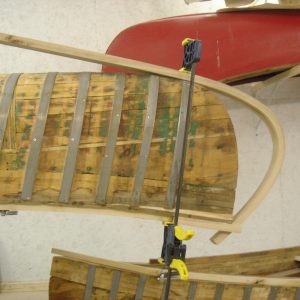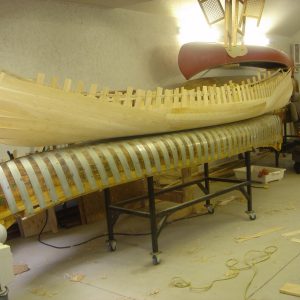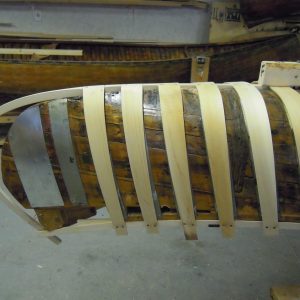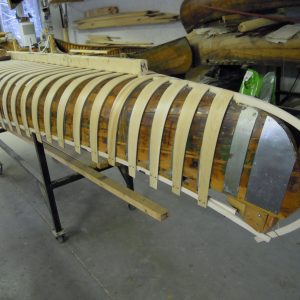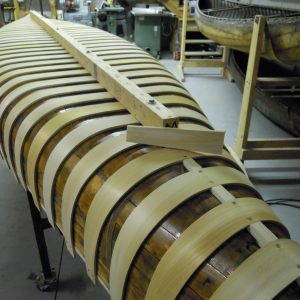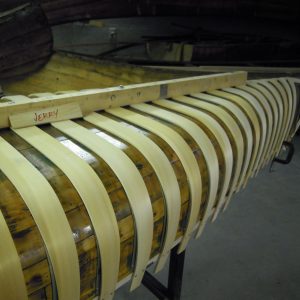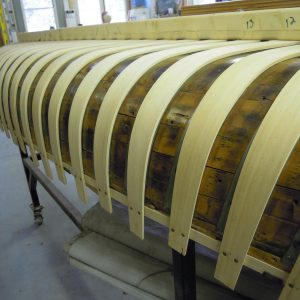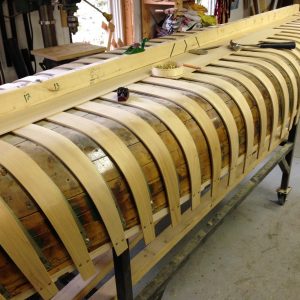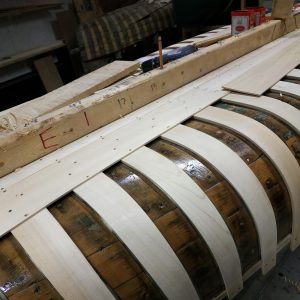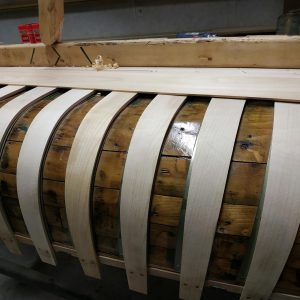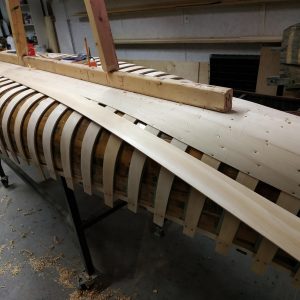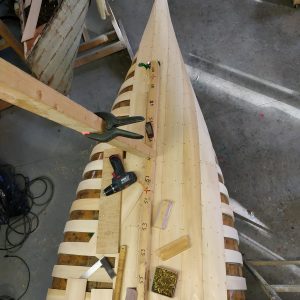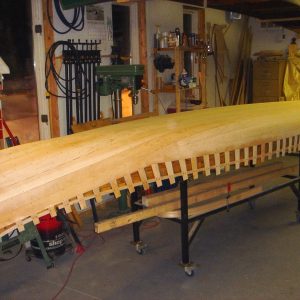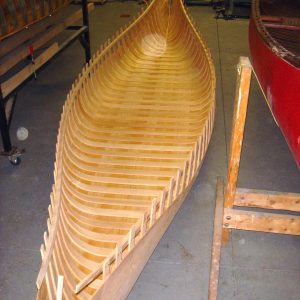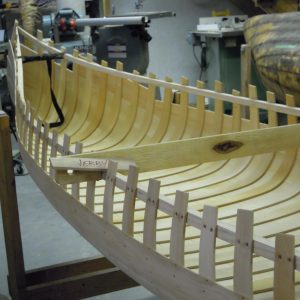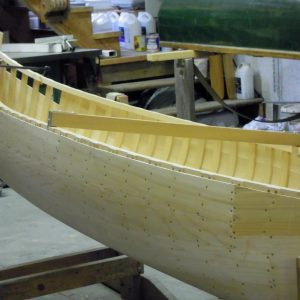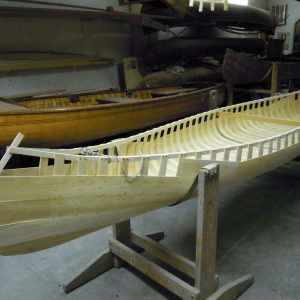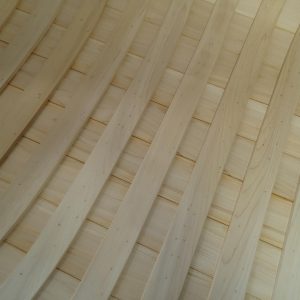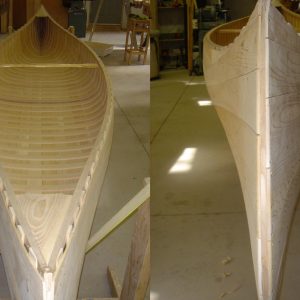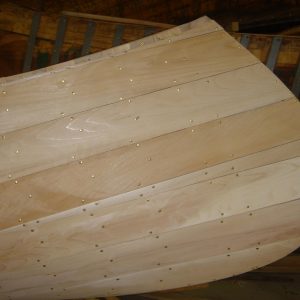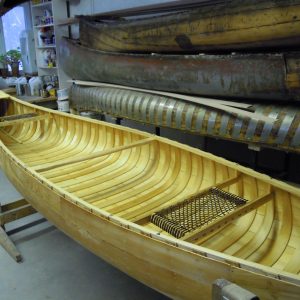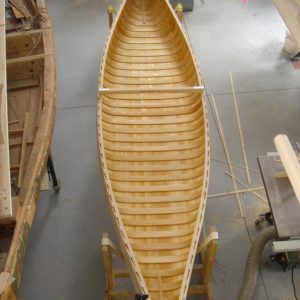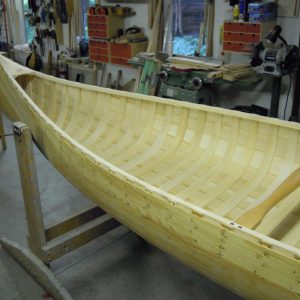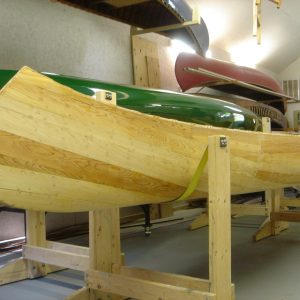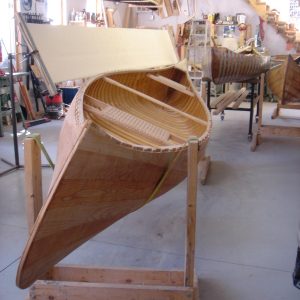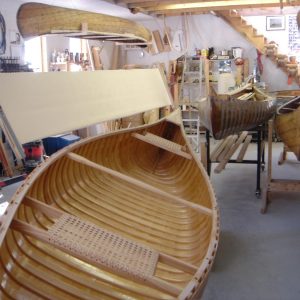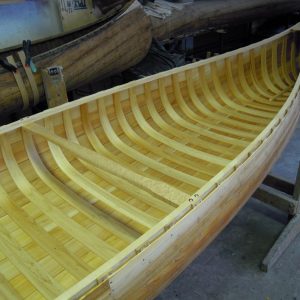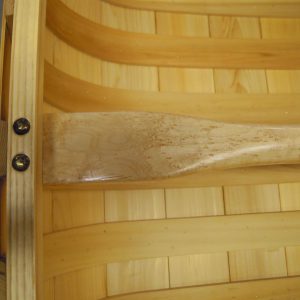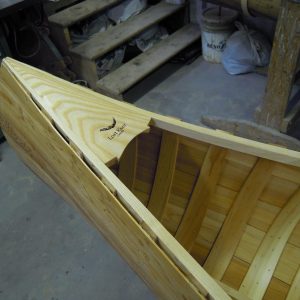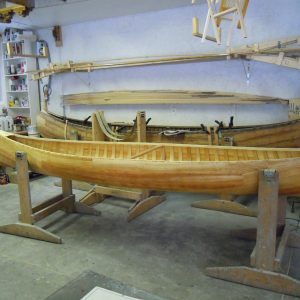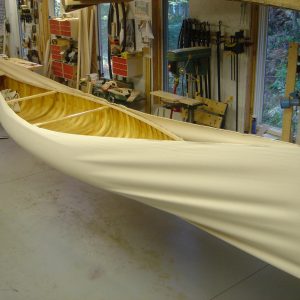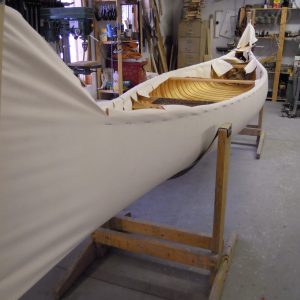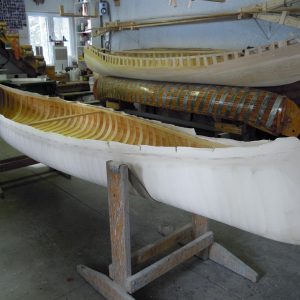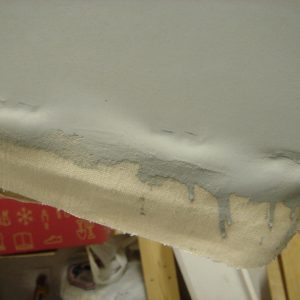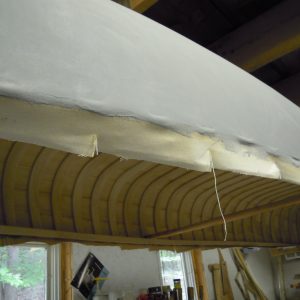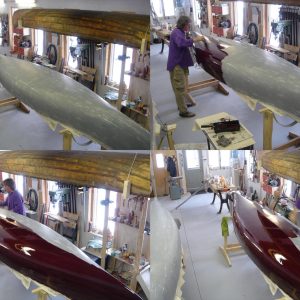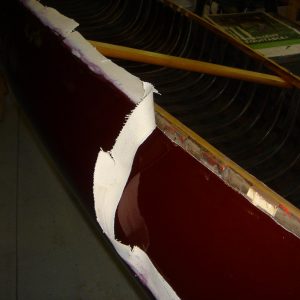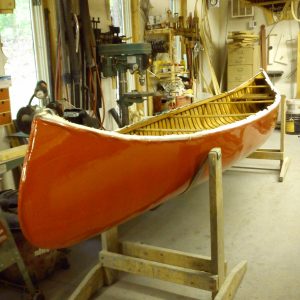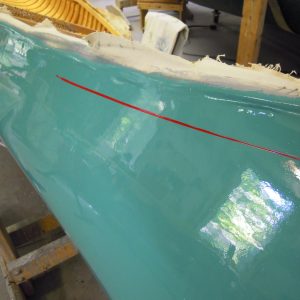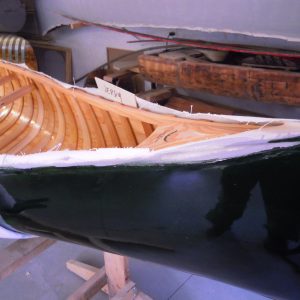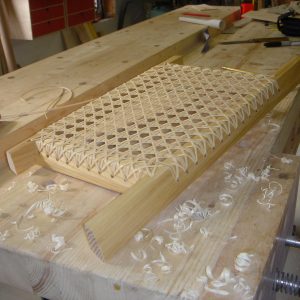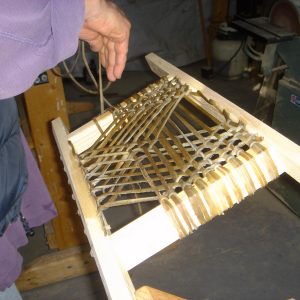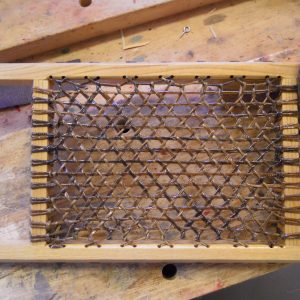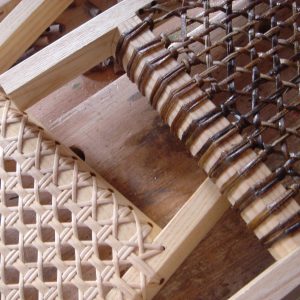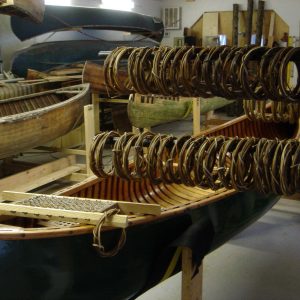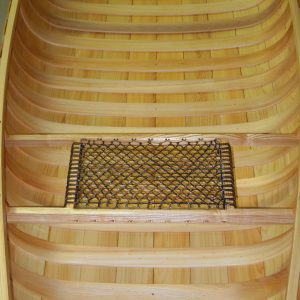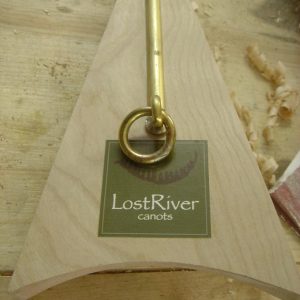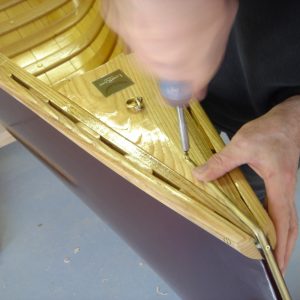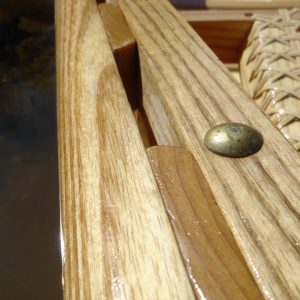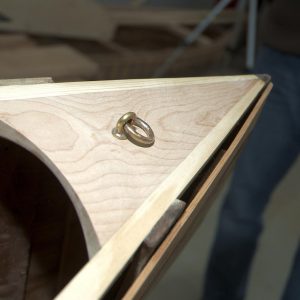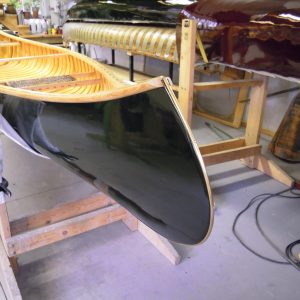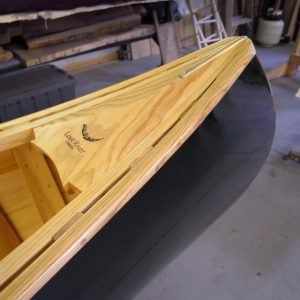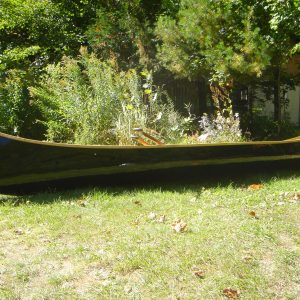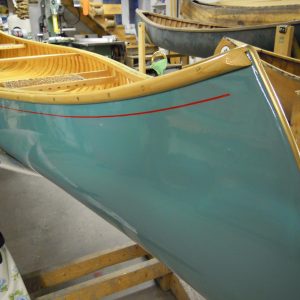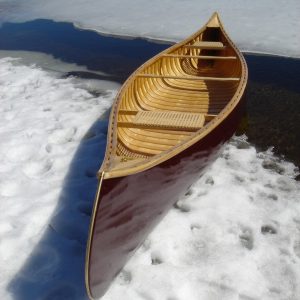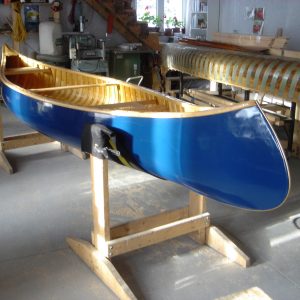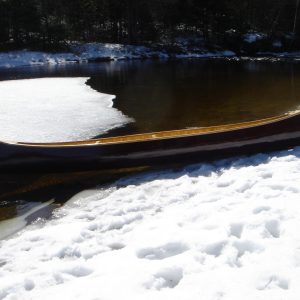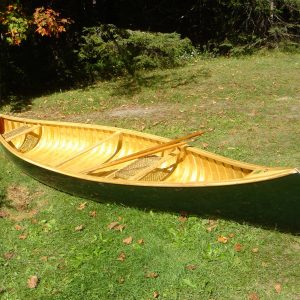The mold and the structure
The cedar canvas canoe has been part of the North American recreational landscape since the second half of the XIXth century. Not surprisingly, we continue to use the same building techniques today.
Although strongly inspired by that of the bark canoe, the constructing a cedar canoe uses a wooden mold covered with metal bands on which the cedar ribs are steam bent and nailed to the gunwales. This structure is then covered with cedar planking to form the hull.
- The mold, essential in the construction of the cedar canoe, must be perfectly symmetrical. It takes about three hundred hours to build a mold.
- The hull (ribs and planking) is made from thuya occidentalis (mistakenly called white cedar) that is free of knots.
- The decks, gunwales, stems, seats and keels are hand made from ash or maple.
The hull
The structure formed by the cedar ribs is then covered with planking to form a hull.
Varnish and oil
The canoe is now ready to be removed from the mold. The craftsman completes the construction, then applies a minimum of four coats of varnish to the interior. On the hull, he applies a coat of of linseed oil with an antifungal. Finally, he covers the canoe with cotton canvas.
The canvas and waterproofing
The canvas is filled with a homemade waterproofing product (a traditional recipe) combining linseed oil and silica powder. It is necessary to let this dry for a month before applying a primer and a minimum of three coats of marine lacquer.
- The hull is covered with #10 grade canvas
Elements and hardware
All the hardwood components such as decks, gunwales, stems, keels and seats are handmade. The seats are caned or hand laced with babiche. All the hardware (stem bands, deck rings, bolts, screws and tacks) are either brass or bronze.
- The babiche seats are hand laced.
- All the hardware (stem bands, deck rings, bolts, screws and tacks) are either brass or bronze.
Completed construction
- Building a 15 foot canoe requires more than a hundred working hours.

